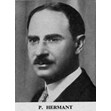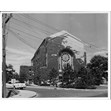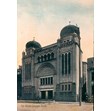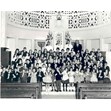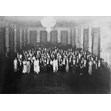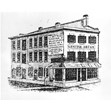- Accession Number
- 2023-2-1
- Source
- Archival Accessions
- Accession Number
- 2023-2-1
- Material Format
- textual record
- Physical Description
- 1 folder of textual records
- 1 photograph : b&w ; 34 x 29 cm
- Date
- [19--]
- Scope and Content
- Accession consists of material that belonged to the late Gilbert Seltzer. Included are handwritten copies of a Camp Yungvelt paper, the Whoosis, and a photograph of a Yiddish youth group, the Yiddisher Kunst-Tsenter (Yiddish/Jewish Art Centre). The Whoosis issues are undated, while the photograph is from 1929/30.
- Custodial History
- Richard Seltzer discovered the material after his father's death and donated it to the Ontario Jewish Archives.
- Administrative History
- Gilbert Seltzer was born on 11 October 1914 in Toronto, Ontario, to Julius Seltzer and Marion Seltzer (née Liss). Gilbert's parents were both Russian immigrants. Julius owned a knitting mill, and Marion was a homemaker. Julius was also an anarchist, and he and Marion had a cottage in the Workmen's Circle Colony in Pickering, Ontario. As a child, Gilbert attended Camp Yungvelt, a Yiddish summer camp for Jewish children. His son, Richard, would later recall that Gilbert "sang songs from there and vaguely spoke of the Whosis," the camp's publication.
- Gilbert studied architecture at the University of Toronto, receiving a bachelor's degree in 1937. After graduating, he worked for an architectural firm in Manhattan. During the Second World War, he served with the 23rd Headquarters Special Troops, a secret army unit that would become known as the Ghost Army. According to Gilbert's obituary in the New York Times, "The unit fooled German forces with inflatable tanks, dummy airplanes, fake radio transmissions and sound effects." In later years, Gilbert would serve as an ambassador for the unit's veterans.
- After the war, Gilbert resumed work as an architect. His projects included the Utica Memorial Auditorium in Utica, New York; buildings at West Point and the US Merchant Marine Academy; and the East Coast Memorial in Battery Park, Lower Manhattan. He worked as an architect until January 2020.
- Gilbert met his future spouse, Molly Gold (m. Seltzer), in New Jersey. The couple had two children together: Joan Seltzer and Richard Seltzer. Molly died in 1994, and Gilbert died on 14 August 2021. He was 106.
- Use Conditions
- Copyright is in the public domain and permission for use is not required. Please credit the Ontario Jewish Archives as the source of the photograph.
- Subjects
- Architects
- Camps
- Portraits, Group
- Name Access
- Camp Yungvelt
- Seltzer, Gilbert, 1914-2021
- Places
- Ontario
- Source
- Archival Accessions
- Accession Number
- 1997-11-3
- Source
- Archival Accessions
- Accession Number
- 1997-11-3
- Material Format
- graphic material
- textual record
- Physical Description
- 1 photograph : b&w ; 21 x 26 cm
- 1 folder of textual records
- Date
- [ca. 1925]-1986
- Scope and Content
- Accession consists of one black-and-white photograph taken of a group of campers at Camp Kindervelt in Rouge Hill. Identified in the photograph is Rae Watson (standing at the far left).
- Also included were several newspaper clippings from 1976–1986, which have been integrated into the clipping files.
- Administrative History
- Camp Kindervelt was a Labour Zionist League camp in Rough Hill, in the east end of Toronto in the Rouge Valley.
- Subjects
- Camps
- Labor Zionism
- Name Access
- Camp Kindervelt
- Shiner, Sol
- Places
- Toronto, Ont.
- Source
- Archival Accessions
- Accession Number
- 1992-10-1
- Source
- Archival Accessions
- Accession Number
- 1992-10-1
- Material Format
- graphic material
- Physical Description
- 3 photographs : b&w ; 20 x 25 cm
- Date
- [ca. 1930]
- Scope and Content
- This accession consists of three copy photographs. Two of these photographs are of Camp Kindervelt in Rouge Hills, north of Ontario; the other photograph is of Branch 3, Labor League, Toronto.
- Subjects
- Camps
- Places
- Ontario
- Source
- Archival Accessions
- Accession Number
- 1997-4-2
- Source
- Archival Accessions
- Accession Number
- 1997-4-2
- Material Format
- graphic material
- Physical Description
- 50 photographs : b&w and col. (24 negatives)
- Date
- 1916-1988
- Scope and Content
- Accession consists of photographs and newspaper clippings documenting the life of the Levine Family. Photographs include class pictures from Port Whitby's Brock School, Purim celebrations at Oshawa's Beth Zion Synagogue, Camp Ogama staff and camper photos, Camp Winnibagoe cabin photos and Royal Winter Fair prize winning photos.
- Use Conditions
- Copyright is in the public domain and permission for use is not required. Please credit the Ontario Jewish Archives as the source of the photograph.
- Subjects
- Camp counselors
- Camps
- Farms
- Farm tractors
- Purim
- Name Access
- Camp Winnebagoe
- Places
- Oshawa (Ont.)
- Whitby (Ont.)
- Source
- Archival Accessions
- Accession Number
- 1980-2-2
- Source
- Archival Accessions
- Accession Number
- 1980-2-2
- Material Format
- text
- graphic material
- Physical Description
- 15 cm of textual records and other material
- Date
- 1935-1962
- Scope and Content
- Accession consists of material documenting the Workmen's Circle (Arbeiter Ring). Included are: three architectural drawings of the summer cottage for Camp Yunvelt (Pickering, Ont.); two group portraits (one with identification and one without); a bound periodical/journal from 1935; a hardcopy of Fertsik yor arbeter-ring: a geshikhte in bilder (English: Forty Years Workmen's Circle: A History in Pictures) put out by the National Executive Committee of the Workmen's Circle in 1940; a bound periodical/journal of Kultur un dertsiung (English: Culture and Education) for the year 1942; a bound periodical/journal of Der freynd (English: The Friend) for the year 1942; a booklet by Rev. Nathan Stolnitz's titled Some of the Numerous Comments and Reviews on Music in Jewish Life (1957?); a newspaper clipping titled "A bukh vom oyngt" (English: A Book That Opens) that was published in 1957; a hardcopy of Workmen's Circle, Pioneers and Builders put out by the Workmen's Circle Pioneers and Builders Committee in 1962; and two other Yiddish-language publications that have not been identified.
- Administrative History
- The Workmen's Circle (Yiddish: Arbeiter Ring) was founded in the United States by Jewish immigrants in the late nineteenth and early twentieth centuries. Circle branches were established in Canada in Montreal and Toronto in 1907 and 1908. In 1917, the Toronto branches incorporated as nonprofit organization called the Arbeiter Ring. The organization celebrated its centenery in 2017.
- Descriptive Notes
- Language: Most of the material in the accession is in Yiddish. The drawings are in English and a few of the publications are in English and Yiddish.
- Subjects
- Camps
- Cottages
- Nonprofit organizations
- Name Access
- Workmen's Circle (Toronto, Ont.)
- Places
- Pickering (Ont.)
- Source
- Archival Accessions
- Accession Number
- 2004-3-6
- Source
- Archival Accessions
- Accession Number
- 2004-3-6
- Material Format
- textual record
- architectural drawing
- Physical Description
- 12 drawings: blueline and pencil: 111 x 77cm or smaller
- 1 folder of textual material
- Date
- 1924-1981
- Scope and Content
- This accession consists of the original architectural plans of the Kiever Synagogue in Kensington Market as well as plans drawn by Martin Mendelow for the Synagogue's restoration in the early 1980s. Also included is a Mendelow drawing of the Minsk Synagogue and textual materials relating to the Kiever
- Custodial History
- Materials were kept by Martin Mendelow
- Administrative History
- Martin Mendelow is a well known architect working in the Toronto area. His professional association with the Kiever Synagogue began when he was hired as architect of the Synagogue's restoration, which was completed in the early 1980s
- Subjects
- Architecture
- Synagogues
- Name Access
- Anshei Minsk Congregation (Toronto, Ont.)
- Kiever Synagogue (Toronto, Ont.)
- Menedelow, Martin
- Places
- Kensington Market (Toronto, Ont.)
- Source
- Archival Accessions
- Accession Number
- 2004-5-37
- Source
- Archival Accessions
- Accession Number
- 2004-5-37
- Material Format
- graphic material
- Physical Description
- 36 photographs : b&w and hand col. (12 negatives) ; 13 x 18 cm or smaller
- Date
- 1938-1943
- Scope and Content
- Accession consists of photographs taken at Camp Balfour Manor on Morrison Lake in Muskoka, Ontario and Camp Yungvelt in Pickering, Ontario. Scenes include a group of young people on the steps of a building, a Shabbat service, a flag lowering ceremony, boxing lessons, an arts and crafts class, and a photograph of Hyman Riegelhaupt at Camp Yungvelt.
- Subjects
- Camps
- Name Access
- Balfour Manor Camp
- Camp Yungvelt
- Places
- Muskoka (Ont. : District municipality)
- Pickering (Ont.)
- Source
- Archival Accessions
- Accession Number
- 2005-11-5
- Source
- Archival Accessions
- Accession Number
- 2005-11-5
- Material Format
- graphic material
- Physical Description
- 1 photograph : b&w ; 15 x 10 cm
- Date
- [ca. 1930]
- Scope and Content
- Accession consists of one photograph of Sadie and Nathan Friedman standing in a field at Crystal's Resort in Pontypool around the summer of 1930.
- Administrative History
- Nathan Friedman (b. 1906-d. 1954) was born in Poland and Sadie (Book) Friedman (b. 1911- d. 1991) was born in Hamilton, ON. They were married in Toronto in June 1929. Nathan worked as a furrier in Toronto. They began vacationing in Pontypool during the early 1930s and originally rented a loft in the Crystal's barn. Later they rented a cabin at Crystal's Resort. The donor, Jerry Friedman, is the son of Nathan and Sadie.
- Pontypool was a popular summer resort spot for vacationing Jews from the 1940s to the 1960s. The area was relatively cheap and had a pond as its swimming spot. Kosher meals would often be brought in for the vacationers who arrived on two trains daily from Union station. Charlie and Surah Crystal were the owners of several resort cabins resort that was popular amongst the Jewish vacationers.
- Subjects
- Charities
- Outdoor recreation
- Vacations
- Name Access
- Friedman, Nathan
- Friedman, Sadie
- Places
- Pontypool, Ont.
- Source
- Archival Accessions
- Accession Number
- 2007-12-2
- Source
- Archival Accessions
- Accession Number
- 2007-12-2
- Material Format
- textual record
- graphic material
- Physical Description
- 90 cm of textual records
- 1000 photographs [approx.]
- Date
- 1919-2007
- Scope and Content
- This accession consists of textual and graphic records documenting the programs and activities of Canadian Young Judaea. The records include newsletters and publications, photographs, anniversary books, and program books. There are also two compact discs containing scanned copies of the photographs from this accession.
- Custodial History
- These records were gathered together for an anniversary celebration held in November 2007. Most of the records were found in the basement of the office building on Marlee Avenue, before being donated to the archives.
- Administrative History
- Canadian Young Judaea was founded in 1909 as a Zionist movement for Canadian youth by members of the Herzl Zion Club. As a Zionist organization, Young Judaea continues to be committed to fostering a sense of Jewish identity and values in today's Jewish youth and to encouraging a lifelong commitment to Israel.
- In order to foster a closer connection to Israel, Canadian Young Judaea employs educational Shlichim from Israel who are posted at various Jewish communities throughout Canada and offices at the national level. In Toronto, Young Judaea also operates several Zionist summer camps located in each region of Canada, and a summer leadership institute called Camp Biluim in Quebec. In addition to the social programme of the organization, Young Judaea also offers educational seminars and conferences.
- Young Judaea's national structure includes a National Executive Board and an Administrative Council. Conventions are held regularly, as are regional conferences. In the past, Young Judaea operated as an associated, but distinct, organization from the Zionist Organization of Canada. However, Young Judaea operations were overseen by the ZOC executive, and Young Judaea received their budget from the ZOC Treasury. In addition, ZOC and Young Judaea worked in conjunction with one another on many projects and programmes, such as with the operation of the Zionist camps. They were therefore dependent on ZOC.
- Subjects
- Camps
- Youth
- Zionism
- Name Access
- Canadian Young Judaea
- Source
- Archival Accessions
- Accession Number
- 2008-11-8
- Source
- Archival Accessions
- Accession Number
- 2008-11-8
- Material Format
- graphic material
- graphic material (electronic)
- Physical Description
- 5 photographs : b&w ; 34 x 15 cm or smaller + identification key
- 55 photographs : b&w (jpgs) ; 300 dpi
- Date
- 1934-1975
- Scope and Content
- This accession consists of photographs documenting the Moscoe family, Camp B'nai Brith near Ottawa, and the Kirkland Lake Jewish community. Also included are a few photographs taken at the amalgamation of Beth Emeth Bais Yehuda Synagogue in 1975. The amalgamation photographs include: Syd Moscoe, Stuart Moscoe, Harry R. Moscoe, Irving Horowitz, Cantor David Bercovici, Cantor Louis Danto, and Rabbi Joseph Kelman.
- Custodial History
- The photographs were loaned to the Archives for copying. The donor has the original records.
- Use Conditions
- Copyright is in the public domain and permission for use is not required. Please credit the Ontario Jewish Archives as the source of the photograph.
- Subjects
- Camps
- Communities
- Families
- Places
- Kirkland Lake (Ont.)
- Source
- Archival Accessions
- Accession Number
- 2009-11-4
- Source
- Archival Accessions
- Accession Number
- 2009-11-4
- Material Format
- textual record
- graphic material
- object
- Physical Description
- 1 folder of textual records
- 2 photographs : b&w ; 9 x 14 cm and 9 X7 cm
- 1 matchbook
- Date
- 1928-2009
- Scope and Content
- Accession consists of mementos, family documents and clippings from Nancy Draper (née Frankel). The records include a birth announcement card for Nancy in 1928 and a matchbook party favour from her wedding to Darrell Draper in 1949. There is also a scholarship application letter from the donor's granddaughter, Haley Draper, to UJA. Other records include a staff list from Camp Wabi-Kon in 1946; a Globe and Mail obituary of Dr. Martin Wolfish, a past volunteer of OJA; a photograph of David Steinhauer; a clipping about an Inuit sculpture inspired by the experience of Holocaust survivor Leon Kahn; and three eulogies for Patricia Drevnig Goldstein (1940-2005) (née Jacobs). Patricia was the granddaughter of Rabbi Solomon Jacobs of Holy Blossom, and her mother, Edna, was a Frankel. Finally, the accession includes a photocopy of a photograph of members of the Siglen family of Meaford with Maurice Frankel, the great-uncle of the donor, and Irwin Rosen, ca. 1928.
- Administrative History
- Nancy Frankel (b. 1928) is the daughter of Carl and Dorothy Jacobs Frankel, past prominent members of the Toronto Jewish community and members of Holy Blossom Temple. Nancy attended Camp Wabi-Kon, a Jewish camp in northern Ontario near Temagami, and then worked there as a teenager. She married Darrell Draper on December 10th, 1949. Nancy is a longtime volunteer at the OJA.
- Subjects
- Clippings (Books, newspapers, etc.)
- Camps
- Families
- Letters
- Obituaries
- Name Access
- Draper, Nancy
- Source
- Archival Accessions
Site of former Palmerston St. Synagogue
[graphic material, graphic material (electronic)]
– [2012?].
- Accession Number
- 2012-3-1
- Source
- Archival Accessions
- Accession Number
- 2012-3-1
- Material Format
- graphic material
- graphic material (electronic)
- Physical Description
- 2 photographs : col. (1 jpg) ; 10 x 15 cm
- Date
- [2012?]
- Scope and Content
- Accession consists of a photograph taken by Jack Hecker of the site of the former Agudath Israel Anshei Sfard Shul (151 Palmerston Ave.). A duplex house currently occupies the site. The text on the duplex building was added in by Jack Hecker.
- Use Conditions
- Copyright is held by the Ontario Jewish Archives. Please contact the Archives to obtain permission prior to use.
- Subjects
- Architecture
- Synagogues
- Name Access
- Agudath Israel Anshei Sfard Synagogue (Toronto, Ont.)
- Source
- Archival Accessions
- Accession Number
- 2014-5-2
- Source
- Archival Accessions
- Accession Number
- 2014-5-2
- Material Format
- multiple media
- Physical Description
- 15 cm of textual records
- 8 architectural drawings
- 2 CDs
- Date
- 1960-2011, predominant 2011
- Scope and Content
- Accession consists of architectural drawings for the construction of the Northern YM-YWHA at 4600 Bathurst Street (1960) as well as floor plans for the proposed re-development of the site in 1999. Also included are submissions for the competition to design and build the Jewish War Veterans of Canada memorial at the Sherman Campus (2011).
- Use Conditions
- UJA Federation meeting minutes and general correspondence are closed for 10 years from date of creation. Contracts and donor agreements are permanently closed.
- Subjects
- Architecture
- Charities
- Veterans--Canada
- Name Access
- Young Men's Hebrew Association (Toronto, Ont.)
- Bathurst Jewish Community Centre
- Jewish War Veterans of Canada
- UJA Federation of Greater Toronto
- Source
- Archival Accessions
- Accession Number
- 2014-10-2
- Source
- Archival Accessions
- Accession Number
- 2014-10-2
- Material Format
- multiple media
- Physical Description
- 40 cm of textual records and other material
- Date
- [192-]-[200-]
- Scope and Content
- Accession consists of records related to the life and career of David Green and the Jaffey family. Records include sound and video recordings of events, Goodwill Sales accounting ledgers, meeting minutes from the Jewish Canadian Military Archives and Museum, David Green's military ephemera, manuals and reports of the Jewish Federation Board of Trustees and Bequest and Endowment Fund, and Jaffey family correspondence and photographs. Records also include certificates of appreciation awarded to David Green, mainly from UJA Federation.
- Administrative History
- David Green (1919-2014) was born in the Junction in west Toronto. He served as a private in the Canadian army as part of the Argyll and Sutherland Highlanders. He was captured and designated MIA when he was held as a POW in Belgium. He became a member of General Wingate Branch 256 Jewish Canadian Legion. In the mid-1940s he married his wife, Sylvia (nee Jaffey) (d. 2010) and they had a daughter, Miriam. He was a longtime volunteer for the UJA Federation of Greater Toronto. In 1990, he was one of the first individuals to establish an Endowment Fund at the Jewish Foundation of Greater Toronto.
- The Jaffey family consisted of Kaby Jaffey, his wife, Nellie, and their children Sylvia, Jess and Albert.
- Descriptive Notes
- Physical description note: Accession also consists of photographs and textiles.
- Subjects
- Canada--Armed Forces
- Charities
- Families
- World War, 1939-1945
- Name Access
- Green, David, 1919-2014
- Places
- Toronto, Ont.
- Source
- Archival Accessions
- Accession Number
- 2014-10-3
- Source
- Archival Accessions
- Accession Number
- 2014-10-3
- Material Format
- textual record
- graphic material
- Physical Description
- 40 cm textual records
- ca. 50 photographs
- Date
- 1940-2012
- Scope and Content
- Accession consists of records of Canadian Young Judaea. Records include correspondence, camp committee meeting minutes, camp committee and staff lists, the CYJ constitution, organizational newsletters, donation lists, flyers and camp reunion ephemera. Records also include clippings and reproductions from the Zionist Archives, and Camp Solelim photographs, as well as publications from other Jewish organizations.
- Administrative History
- Canadian Young Judaea was founded in 1909 as a Zionist movement for Canadian youth by members of the Herzl Zion Club. As a Zionist organization, Young Judaea continues to be committed to fostering a sense of Jewish identity and values in today's Jewish youth and to encouraging a lifelong commitment to Israel. In order to foster a closer connection to Israel, Canadian Young Judaea employs educational Shlichim from Israel who are posted to various Jewish communities throughout Canada and to offices at the national level in Toronto Young Judaea also operates several Zionist summer camps located in each region of Canada, and a summer leadership institute called Camp Biluim in Quebec. In addition to the social programme of the organization, Young Judaea also offers educational seminars and conferences.
- Use Conditions
- Partially closed. Researchers must receive permission from the OJA Director prior to accessing some of the records.
- Descriptive Notes
- Access restriction note: Files contain personal information of donors, campers, committee members and applicants for subsidies.
- Subjects
- Camps
- Youth
- Zionism
- Name Access
- Canadian Young Judaea
- Source
- Archival Accessions
- Accession Number
- 2015-8-7
- Source
- Archival Accessions
- Accession Number
- 2015-8-7
- Material Format
- multiple media
- Physical Description
- ca. 70 cm of textual records and other material
- Date
- 1928-2013
- Scope and Content
- Accession consists of material documenting the activities of Ben Zion Shapiro and his family. The bulk of the records document the Shapiro family's involvement in Young Judaea. The Young Judaea material includes: yearbooks, photographs, correspondence, meeting minutes, event programmes, song books, newsletters, and two Camp Biluim flags made by Bunny Shapiro. One flag contains Camp Biluim's crest (1951) and the other one was created for Camp Biluim's colour war and contains the text "We will try and we will succeed Camp Biluim" (1954?). Also included is a VHS tape containing a copy of the Toronto Zionist Council's video about Camp Shalom (1991?). Of note are minute books maintained by Roy Shapiro for the Toronto Young Judaea Administrative Board (1928-1934) and for the Leadership Club (1940-1948).
- Accession also contains material relating to Roy and Ben Zion's involvement with the following organizations: the Coordinated Services to the Jewish Elderly (Circle of Care), B'nai Israel Beth David Congregation, Beth Tzedec's Mispacha Program, Beth Tzedec's Israel Action Program, Congregation Beth Haminyan, and Holy Blossom Temple's Department for Jewish Living. These records include, minutes, correspondence, newsletters and publications, evaluation reports and other reports. Also included is a demographic report entitied "Rapid Growth and Transformation: Demographic Challenges Facing the Jewish Community of Greater Toronto" (1995), material from a conference at the University of Toronto on the university's partnership with Israel, CHAT alumni directories, and a CHAT book entitled, "Voices: Jewish Teens of the 90's". Of note are buttons, photographs, reports and correspondence documenting Bunny and Ben Zion's trip to the Soviet Union on behalf of the CJC's Committee for Soviet Jewry.
- Finally accession includes material documenting family activities of the Shapiro and Sherman family. Included is a transcript of Bessie Sherman telling her life story (1978), haggadot, PowerPoint presentations created by Ben Zion for his grandchildren and for a family reunion outlining the family history of his family and Bunny's family. There is also a video of Ben Zion presenting his PowerPoint at the Michalski / Cohen family reunion. Also included are family films and videos containing footage of Bunny and Ben Zion's wedding and honeymoon, Camp Biluim, Young Judaea events, Bunny on Machon, family wedding anniversaries and birthday parties, trips to Israel, the United States, and Europe as well as footage of the Cousin's Club. Also included is a VHS tape containing a recorded segment from CityPulse News featuring the family's Pesach festivities in 1995.
- Photo identification: Back row, left to right: Ray Markus, Michelle Landsberg, Menachem ?, Frank Narrol. Front row, left to right: Gilda Mitchell, Bunny Shapiro, BenZion Shapiro, Malka Rabinowitz.
- Administrative History
- Ben Zion Shapiro was born in Toronto in 1931 to Roy Shapiro and Beck Shapiro (née Cohen). He has a younger brother, Morden "Mort" Shapiro (b. 1940). His father worked as an office manager at Rotstein Furniture and Maple Leaf Cleaners, and his mother worked as a legal secretary until marriage. Roy was active in a number of organizations including: Young Judaea, Sons of Jacob Society, Toronto Camera Club, a founding member of Beth David Synagogue, Coordinated Services to the Jewish Elderly (Circle of Care) and president of the Association of Jewish Seniors. Beck was active in Young Judaea and Pioneer Women (president of the Golda Meir Club).
- Ben Zion received a master of social work degree from the University of Toronto and attended the Jewish Agency Institute for Youth Leaders from Abroad in Jerusalem (1951-1952). He has worked for a number of organizations throughout his career, including: Young Judaea (he was director of both Camp Shalom [1962-1969] and Camp Biluim [1954-1956]), B'nai Brith Youth Organization, University Settlement, St. Christopher's House and director of the Novomeysky Centre in Jerusalem (1957-1961). He was also professor and associate dean of social work at the University of Toronto and three times visiting professor at the Hebrew University in Jerusalem.
- Ben married Bunny "Bernice" Shaprio in 1955. Bunny was born in 1934 in Noranda, Quebec to Irving Sherman and Bessie (née Consky). Bunny attended public school in Noranda, Noranda High School and Forest Hill Collegiate in Toronto, University of Toronto (BA), the Ontario Institute for Studies in Education (M.Ed. in special education), and the Jewish Agency Institute for Jewish Leaders from Abroad (1952-1953).
- Bunny graduated from the first Camp Biluim Institute for leadership training in 1951 and worked with Ben Zion at Camp Shalom as Camp Mother in 1962 and from 1964-1969. She also worked at Camp Biluim from 1955-1956. In 1983, Bunny and Ben Zion went to the Soviet Union to visit refuseniks on behalf of the Soviet Jewry Committee of the Canadian Jewish Congress, Ontario Region.
- Bunny and Ben have two children: Ayala and Ilan. Since Ben Zion's retirement in 1996, he and Bunny have been living in Jerusalem for half of each year. In 2015, they moved full-time to Jerusalem.
- Use Conditions
- Copyright is held by the Ontario Jewish Archives. Please contact the Archives to obtain permission prior to use.
- Descriptive Notes
- Physical description note: includes ca. 300 photographs (256 tiff), 2 PowerPoint presentations, 1 textual record (doc), 4 buttons, 2 flags, 5 VHS tapes, and 18 film reels (8 mm).
- Subjects
- Camps
- Youth
- Zionism
- Name Access
- Shapiro, Ben Zion, 1931-
- Source
- Archival Accessions
- Accession Number
- 2015-10-4
- Source
- Archival Accessions
- Accession Number
- 2015-10-4
- Material Format
- graphic material
- textual record
- Physical Description
- ca. 250 photographs (3 albums) : b&w and col. ; 53 x 43 cm and smaller
- 9 cm of textual records
- Date
- [191-]-[197-], 1992
- Scope and Content
- Accession consists of records related to the Title, Samuels and Fishman families. Included are family photographs, and photos related to involvement with philanthropy and industry, materials related to Reliable Toy Company, Forest Hill Collegiate "Forester" year books, a land deed for the Ansheir Yoisher Misrachi Synagogue in Welland, news clippings relating to Alex Samuels death, a Holy Blossom "Tempelite" year book, a Crown Bakery Bread promotional item, a wedding menu from the marriage of Molly Fishman and Harry Title, Molly Fishman's high school diplomas and JNF certificates. There are a number of photos of the Fishman and Title families in Welland and the United States, photos of the Crowland Volunteer Fire Department with Sam and Frank Fishman, Turk family albums with Moishe Turk and Eva Fishman, an album of a sefer torah dedication to Baycrest Hospital in memory of Leah Fishman, photos of the Samuels family, their trip to Israel, promotional photos from the Reliable Toy Company, Beth Tzedec founding board photos, and B'nai Brith Women photos.
- Administrative History
- Samuel (ca. 1882-1929, Russia) and Gussie (nee Moscovitz) (b. ca.1884, Romania) Fishman, immigrated to Welland Ontario from Romania. Both arrived to the USA as teenagers sometime around the turn of the century. Samuel and Gussie were married in the USA and by 1920 immigrated with their young family to the historic township of Crowland in Welland County. Here they opened and operated a men's clothing store. Together they had six children, Molly (b. 1909, USA), Abe (b. 1911, USA), Morris (b. 1916, USA), Ruth (b. 1915, USA), Ann (b. 1920, Ontario) and Ethel. Morris married Pauline and lived in St. Catherines, Ruth married Nate Oelbaum and lived in Tucson Arizona, Anne married Alec Rothman and lived in Port Colborne, Ethel married Eddie Matchtinger and lived in Toronto and Abe never married. Yeva Fishman, the niece of Samuel Fishman married Morris Turk. Her father was (Frank Fishman?) and her mother was Sara Leah Fishman. Molly Fishman married Harry Title (Teitelebaum) (b. ca. 1903). They had three children, Greta (nee Title) Greisman, Sandra (nee Title) Samuels and Stephen (m. Carole Hillman, niece of Ben Hillman). Harry Teitelbaum is the son of Israel and Frumeth Teitelbaum. He was born in Gdansk Poland (b. ca., 1903). Harry Title had four younger siblings Lloyd, Birdie (m. Witlin), Arthur and Lorelle (Lieba) the youngest who was born in Toronto. Harry arrived to Canada shortly after the first world war and worked in the garment industry. He and his brother Arthur founded the Title Dress Company in the late 1920s and operated the business out of 355 Adelaide St. West. In the late 1980s, the business moved from this location to Adelaide and Bathurst. Sandra Title (b. Oct 27, 1936, Toronto), the middle daughter of Molly Fishman and Harry Title, married Lawrence Samuels. Together they had five children Joanna, John, Noah, Tom and Caroline. Lawrence was the eldest son of Alex Samuels (d. 1966) and Kate (nee Goldberg) Samuels. He had two younger siblings Herbie and Florence (m. Bill Goodman). Lawrence's father Alex Samuels immigrated to Canada from Dubrovna, White Russia (present day Dubrouna, Belarus). He immigrated to Canada with his parents Samuel and Chana Samuels and his younger siblings Sol, Ben, Riva and Polly. Alex and his brothers Sol and Ben established Reliable Toy Company in (ca. 1929) on Carlaw Ave. They sold the company in 1990.
- Subjects
- Business
- Charities
- Families
- Places
- Welland, Ont.
- Toronto, Ont.
- Israel
- Source
- Archival Accessions
- Accession Number
- 2016-1-1
- Source
- Archival Accessions
- Accession Number
- 2016-1-1
- Material Format
- textual record
- Physical Description
- ca. 14 cm of textual records
- Date
- 2006-2014
- Scope and Content
- Accession consists of textual records documenting the fundraising activities for the Lebovic Jewish Community Campus, Sherman Campus and Miles Nadel JCC & Wolfond Centre for Jewish Campus Life. Records include brochures, an exhibit proposal for the National Centre for Jewish Heritage, event programs, newsletters, commemorative books for openings, powerpoint presentations and copies of the publication Vision featuring Philanthropy and Leadership. In addition, there is a special presentation booklet made for the Offer family.
- Use Conditions
- UJA Federation meeting minutes and general correspondence are closed for 10 years from date of creation. Contracts and donor agreements are permanently closed.
- Subjects
- Charities
- Fund raising
- Name Access
- UJA Federation of Greater Toronto
- Source
- Archival Accessions
- Accession Number
- 2017-4-7
- Source
- Archival Accessions
- Accession Number
- 2017-4-7
- Material Format
- graphic material
- textual record
- Physical Description
- 8 cm of textual records
- 1 photograph : col. ; 13 x 18 cm
- Date
- 2004-2010
- Scope and Content
- Accession consists of a photograph of Ted Sokolsky and textual records that include: Centre Square Seniors' Centre Program and Design Brief (2004), Israel Emergency Campaign Fact Finding Trip by Ted Sokolsky and Adam Minsky (2007), Israel Emergency Campaign Proposal Draft 1 (2007) and a photo scrapbook of the Hatzor Ha'Glilit Early Childhood Centre (2010) thanking the UJA for its contribution to the construction of its new building.
- Custodial History
- Donated by Adam Minsky's office.
- Use Conditions
- UJA Federation meeting minutes and general correspondence are closed for 10 years from date of creation. Contracts and donor agreements are permanently closed.
- Subjects
- Charities
- Israel
- Older people
- Name Access
- UJA Federation of Greater Toronto
- Places
- Toronto (Ont.)
- Source
- Archival Accessions
- Accession Number
- 2017-8-10
- Source
- Archival Accessions
- Accession Number
- 2017-8-10
- Material Format
- multiple media
- Physical Description
- 3 cm of textual records
- 3 photographs : b&w ; 13 x 9 cm and smaller
- 1 DVD
- Date
- [ca. 1920]-2012
- Scope and Content
- Accession consists of records related to the history of the Dora Wilensky Salsberg Memorial Fund at Jewish Family and Child. Included are: a Canadian Jewish News feature ("Legacy of Life") on Dora Wilensky; a Dora Wilensky Memorial Fund pamphlet; correspondence from J. B. Salsberg regarding Sharyn’s ongoing role with the Jewish Communal Service Graduate Studies Scholarship Program; correspondence regarding the Fund between Sharyn Salsberg Ezrin and Richard Cummings, Ron Levin, Gordon Wolfe, and Sam Helfenbaum; fund and endowment statements regarding the Dora Wilensky Memorial Fund; and correspondence between Sharyn and the Toronto Jewish Congress Endowment Fund. Also includes: records documenting the J. B. Salsberg Tribute Dinner held at Beth Sholom Synagogue on November 13, 1991; Canadian Jewish News and Toronto Life profiles of J. B. Salsberg; an interview of J. B. Salsberg by Sandy Naiman; J. B. Salsberg's eulogy by Irving Abella; and one DVD of a J.B. Salsberg video tribute. Also includes three photographs of J. B. Salsberg and Dora Wilensky, and four issues of various JF&CS publications.
- Administrative History
- Dora Wilensky Salsberg was one of Toronto’s earliest professionally trained Jewish social workers and a leader in the Canadian social work field. She was born in Russia on July 28, 1902 to Hyman and Mary Wilensky. She had three younger sisters: Bertha (b. 1903) Jenny (b. 1905), and Fagel (b.1910). In 1907, the family immigrated to Toronto where Hyman worked at a cap factory.
- Dora had the highest marks in the province of Ontario upon graduating from high school and graduated as a gold medalist in modern history from McMaster University in Toronto. She initially pursued a career in teaching, but had difficulty securing a job due to discrimination. When her only job offer from Oshawa was given on the condition that she change her last name, Dora decided to become a social worker.
- After studying at the New York School for Social Work and working briefly in Chicago, Dora returned to Toronto and took up the position as Executive Director of the Jewish Family Welfare Bureau in 1931. When the JF&CS was formed in 1943 she served as its first Executive Director. Under her leadership, JF&CS gained a reputation as being one of the most advanced and progressive agencies in Toronto. She was among the first to hire a psychiatric social worker and to introduce play therapy as part of treatment; she remained on top of advances being made in the field in other countries and encouraged her staff to regularly engage in professional development activities.
- Dora attempted to enter the United States for professional development in the fall of 1948. She was refused entry by the commissioner of immigration and naturalization. Her aim was to attend a postgraduate course in social work at the University of Pennsylvania. In spite of numerous official letters of endorsement, her application for admission was denied.
- Dora was also actively involved in various professional organizations. She was a member of the National Board of the Canadian Association of Social Workers, served on the Board of Governors and various committees of the Canadian Welfare Council, and was active on the Social Planning Council (formerly the Welfare Council of Toronto). In addition, she was instrumental in the establishment of the University of Toronto’s post-graduate course in social work. For her service to the field, she earned both the King George V and Coronation medals.
- In 1927, Dora married J. B. Salsberg. Although she legally adopted his name, she always used her maiden name professionally. They did not have any children. On March 20, 1959, Dora passed away from cancer at the age of 56.
- Subjects
- Charities
- Charities
- Name Access
- Salsberg, J. B.,1902-1998
- Wilensky, Dora, 1902-1959
- Places
- Toronto, Ont.
- Source
- Archival Accessions
- Accession Number
- 2018-7-21
- Source
- Archival Accessions
- Accession Number
- 2018-7-21
- Material Format
- textual record
- graphic material
- multiple media
- Physical Description
- 113 cm of textual and other records
- 1 scrapbook
- Date
- 1938-2016
- Scope and Content
- Accession consists of material documenting the Act to End Violence Against Women organization. Included are: meeting minutes of the executive board; a ledger containing executive board waivers of notice; meeting minutes and resolutions from the yearly conventions; photographs of Act to End Violence Against Women members; correspondence with other organizations; correspondence, research material, public reactions, and ephemera from various campaigns; a commemorative booklet for a B'nai Brith cantorial concert; a scrapbook on the formation of the B'nai Brith Women Claire Morry Chapter; constitutions, constitutional amendments, reports, budgets, resolutions and other records of Act to End Violence Against Women; member lists and honour roll of past chapters; material and correspondence with B'nai Brith Washington; UJA material concerning assimilation and intermarriage and 2001 Jewish census data results.
- Administrative History
- The first Canadian chapter of B'nai Brith Women International was formed in Windsor, Ontario in 1923. Other chapters were soon formed throughout Eastern Canada and additional chapters were established in Winnipeg and British Columbia after 1949. The organization was initially administered by the American B'nai Brith Women. In 1976, it finally became autonomous (although still affiliated with the American agency) and changed its name to B'nai Brith Women of Eastern Canada. In 1981, its name was changed again to B'nai Brith Women of Canada. In 1995, the organization became known as Jewish Women International of Canada (JWIC). In November 2011, the organization underwent a final name change to Act to End Violence Against Women.
- JWIC is committed to social change, with a particular focus on improving the lives of women and their families. In the 1980s, the agency initiated programs to counter domestic violence and began operating safe housing for Jewish women and children known as ASTEH (Alternative Safe Temporary Emergency Housing). JWIC also runs the JWI Residential Treatment Centre for emotionally disturbed youth.
- Use Conditions
- Partially closed. Researchers must receive permission from the OJA Director prior to accessing some of the records.
- Descriptive Notes
- Language note: Material in English, Russian and French.
- Subjects
- Charities
- Family violence
- Women
- Name Access
- Act to End Violence Against Women
- Places
- Canada
- Source
- Archival Accessions
- Accession Number
- 2018-9-4
- Source
- Archival Accessions
- Accession Number
- 2018-9-4
- Material Format
- textual record
- Physical Description
- 42 cm of textual records
- Date
- 2001-2017
- Scope and Content
- Accession consists of records created and accumulated by Director, Capacity Building for the Social Services Sandi Pelly. Included are: reports, including annual reports; strategic plans; and studies for agencies funded by UJA Federation of Greater Toronto. Agencies documented in the records include: Bernard Betel Centre, Circle of Care, Chai-Tikvah Foundation, JACS, Jewish Family & Child, JIAS Toronto, JVS Toronto, Kehilla Residential Programme, Reena, and Zareinu Educational Center.
- Custodial History
- Shortly after Pelly left UJA Federation of Greater Toronto, her records were transferred to the office of Viola Dessanti, vice president of measurement analytics and evaluation. On September 9, 2018 the archivist went through the records, selected those that had archival value, and brought them back to the archives.
- Use Conditions
- UJA Federation meeting minutes and general correspondence are closed for 10 years from date of creation. Contracts and donor agreements are permanently closed.
- Subjects
- Charities
- Name Access
- UJA Federation of Greater Toronto
- Places
- Toronto (Ont.)
- Source
- Archival Accessions
- Accession Number
- 2019-2-4
- Source
- Archival Accessions
- Accession Number
- 2019-2-4
- Material Format
- graphic material
- architectural drawing
- sound recording
- Physical Description
- ca.15 cm of textual records 5 DVD
- Date
- 2002-2011
- Scope and Content
- Accession consists of material created or accumulated by the vice president, strategic community planning and engagement Robin Gofine during her time at UJA Federation of Greater Toronto. Through her position with the UJA Federation of Greater Toronto, Robin Gofine was involved in numerous project proposals. The following are documented in this accession: Sorel Etrog Central Square, Dubi Wall Mural, UJA Arts and Culture Mission, Jewish Museum of Toronto, Vaughan Campus, Central Campus Redevelopment, Centre for Canadian Jewish Heritage and Culture, and Sherman Campus.
- Subjects
- Charities
- Name Access
- Gofine, Robin
- UJA Federation of Greater Toronto
- Places
- Toronto (Ont.)
- Source
- Archival Accessions
- Accession Number
- 2019-3-6
- Source
- Archival Accessions
- Accession Number
- 2019-3-6
- Material Format
- textual record
- Physical Description
- 3 folders
- Date
- 1999-2013
- Scope and Content
- Accession consists of correspondence and other material documenting UJA Federation of Greater Toronto and funded agencies including Jewish Immigrant Aid Services (JIAS) and Community Planning and Allocation (CP&A).
- Subjects
- Charities
- Name Access
- UJA Federation of Greater Toronto
- Places
- Toronto (Ont.)
- Source
- Archival Accessions
- Accession Number
- 2019-11-4
- Source
- Archival Accessions
- Accession Number
- 2019-11-4
- Material Format
- textual record
- Physical Description
- 3 folders of textual records
- Date
- 1922–1936
- Scope and Content
- Accession consists of three Jewish Family and Child case files.
- Administrative History
- Jewish Family & Child was established in 1943 from the amalgamation of a variety of different social agencies formed as early as 1868. These included the Ladies Benevolent Fund, the Free Burial Society, Jewish Family Welfare Bureau, Jewish Children’s Bureau, Big Brothers and Big Sisters, and the Ladies Maternal Aid Society. Much of its funding and support after its inception came from the United Jewish Welfare Fund.
- The first executive director of the agency was Dora Wilensky. She was a trained social worker who served for twenty-eight years, until her untimely death from cancer in 1959. Jerome Diamond took over in 1960 and Gordon Wolfe succeeded him in 1981. Ron Levin briefly replaced Wolfe after his retirement in 2003, and was succeeded in 2006 by Dr. Richard Cummings who then retired in 2015. As of 2017, Brian Prousky is the organization’s current executive director.
- During the early years, fees were established, but the agency never refused to assist clients because of their inability to pay. JF&CS became one of the first agencies to rely on trained social workers. It was also the first social agency in Canada to become unionized.
- Over the years the agency’s role has changed and it has expanded significantly, in terms of its staff and services. After the Second World War it played a pivotal role supporting the Holocaust orphans who came to Canada as refugees, particularly in the area of locating foster parents for these children. By 1957, the agency hired its first counsellor and became a member of the United Community Fund of Greater Toronto. The year 1968 marked the start of JF&CS’ new program involving the use of a mobile treatment centre to reach out to Jewish street kids and in 1974 they established the Jerome D. Diamond Adolescent Centre.
- In 1981, JF&CS was mandated by the Province of Ontario as a Jewish children’s aid society responsible for the care and protection of all Jewish youth in the GTA. In 1983 they established the Just-A-Second Shop at 3101 Bathurst Street, which took in used goods from the community to pass on to needy families. Two years later they established the Henry G. Goodman Home for developmentally handicapped children on Wilmington Avenue. The following year marked the opening of the Elm Ridge Group Living Residence for elderly people. In 1988, they opened a special shelter for abused women and children, and in 1994, they introduced their Homework Club for kids.
- The current mission of Jewish Family & Child is to support the healthy development of individuals, children, families, and communities through prevention, protection, counselling, education, and advocacy services, within the context of Jewish values. Their services include counselling, rehabilitation and support, foster care, family services, and community services. These services are offered in a host of different languages including Hebrew, Yiddish, Russian, French, and English.
- JF&CS is an independent organization that receives its funding from a variety of different sources such as UJA Federation of Greater Toronto, United Way Toronto and York Region, the Government of Ontario, and individual donations.
- As of 2017, JF&CS has nearly 130 staff providing more than thirty community services with a budget of almost $20 million. Their main office is located in the Lipa Green Centre for Community Services at 4600 Bathurst Street. They also maintain offices and run services out of their downtown branch at 35 Madison Avenue, their York Region branch inside UJA’s 1 Open Door at the Lebovic JCC, and their Jerome D. Diamond Adolescent Centre in midtown Toronto.
- Use Conditions
- Conditional Access. Researchers must receive permission from the donor prior to accessing the records. Please contact the OJA for more information.
- Subjects
- Charities
- Name Access
- Jewish Family and Child
- Places
- Canada
- Source
- Archival Accessions
- Address
- 23 Henry Street
- Source
- Landmarks
The Beth Jacob Synagogue (also known as the Henry Street Shul) was founded by Toronto’s Polish-Jewish Community, as the successor of an older, smaller synagogue on Elm Street. It was the first synagogue in Toronto designed by a Jewish architect--Benjamin Brown.
- Address
- 23 Henry Street
- Time Period
- 1922-1969
- Scope Note
- The Beth Jacob Synagogue (also known as the Henry Street Shul) was founded by Toronto’s Polish-Jewish Community, as the successor of an older, smaller synagogue on Elm Street. It was the first synagogue in Toronto designed by a Jewish architect--Benjamin Brown.
- History
- The grand new synagogue was dedicated in 1922, at a cost of $156,000, and could accommodate up to 800 worshippers. It was built in the Romanesque style. It was notable for its vaulted ceiling capped by a large dome and four smaller ones; stained glass windows and retractable roof used on Sukkot; a marble-lined mikvah in the basement; and an apartment for the caretaker (shammas) in the rear. The original ark (Aron Kodesh) is in Beth Jacob's current synagogue on Overbrook Ave in the Bathurst Manor. The original building was eventually sold and converted into a church. It is the current site of the Holy Trinity Russian Orthodox Church.
- Category
- Architecture
- Religious
- Source
- Landmarks
- Address
- 187 Brunswick Avenue
- Source
- Landmarks
During the early 1980s, newcomers to the synagogue introduced an alternative egalitarian service in the basement, which eventually became the main service in the sanctuary. The Synagogue underwent renovations in the early 1980s, and again more recently, in an effort to accommodate its new members and to provide for its future as a neighborhood synagogue. In recent years, the First Narayever has become one of the most well-attended and active synagogues in the downtown area.
- Address
- 187 Brunswick Avenue
- Time Period
- 1914-present
- Scope Note
- During the early 1980s, newcomers to the synagogue introduced an alternative egalitarian service in the basement, which eventually became the main service in the sanctuary. The Synagogue underwent renovations in the early 1980s, and again more recently, in an effort to accommodate its new members and to provide for its future as a neighborhood synagogue. In recent years, the First Narayever has become one of the most well-attended and active synagogues in the downtown area.
- Category
- Architecture
- Religious
- Source
- Landmarks
- Address
- 25 Bellevue Avenue
- Source
- Landmarks
The congregation of Rodfei Sholom Anshei Kiev, commonly known as the Kiever, dates back to 1912. The first few members had little means for funding a new synagogue in 1912, so services at this time were held in a rented house on Centre Avenue in the Ward.
- Address
- 25 Bellevue Avenue
- Time Period
- 1927-present
- Scope Note
- The congregation of Rodfei Sholom Anshei Kiev, commonly known as the Kiever, dates back to 1912. The first few members had little means for funding a new synagogue in 1912, so services at this time were held in a rented house on Centre Avenue in the Ward.
- History
- In 1917, the Kiever acquired a house at 25 Bellevue Avenue in Kensington Market and by 1923 the Kiever congregation raised enough funds to build a synagogue large enough to accommodate its growing numbers. The Kiever Executive contracted Benjamin Swartz, a Jewish architect, to design the current synagogue at 25 Bellevue, which replaced the two houses that had been used for services. The Synagogue was completed in 1927, after three years of construction. Today, the Kiever is a vibrant synagogue and one of a handful of synagogues remaining in the downtown area.
- Category
- Architecture
- Religious
- Source
- Landmarks
- Address
- 91 Denison Avenue
- Source
- Landmarks
The Anshei Libavitch Synagogue was formed around 1905 and was first located on Centre Ave in the St. John's Ward. It later moved to Denison Ave where it remained until its merger with Shaarei Tefillah on Bathurst Street in 1976.
- Address
- 91 Denison Avenue
- Time Period
- 1905-1976
- Scope Note
- The Anshei Libavitch Synagogue was formed around 1905 and was first located on Centre Ave in the St. John's Ward. It later moved to Denison Ave where it remained until its merger with Shaarei Tefillah on Bathurst Street in 1976.
- Category
- Architecture
- Religious
- Source
- Landmarks
- Address
- 327 Spadina Avenue
- Source
- Landmarks
The congregation was formed in 1909 and its first building opened on Spadina Ave in 1921. Around 1960, the congregation moved to the Bathurst and Sheppard area after the synagogue wsa damaged by a fire. In 1975, they merged with Beth Emeth Beit Yehuda
- Address
- 327 Spadina Avenue
- Time Period
- 1909-1975
- Scope Note
- The congregation was formed in 1909 and its first building opened on Spadina Ave in 1921. Around 1960, the congregation moved to the Bathurst and Sheppard area after the synagogue wsa damaged by a fire. In 1975, they merged with Beth Emeth Beit Yehuda
- Category
- Architecture
- Religious
- Source
- Landmarks
- Address
- 69 McCaul Street
- Source
- Landmarks
Beth Hamidrash Hagadol, more commonly known as the McCaul Street Synagogue, was first established in 1887 and was originally located above a grocery store (owned by A. Broudy) at the corner of Richmond and York Streets. Due to financial instability, the location changed frequently during its early years, eventually to the top of a blacksmith shop. In 1899, a new home was purchased at the corner of Simcoe and Pearl Streets.
- Address
- 69 McCaul Street
- Time Period
- 1905-1952
- Scope Note
- Beth Hamidrash Hagadol, more commonly known as the McCaul Street Synagogue, was first established in 1887 and was originally located above a grocery store (owned by A. Broudy) at the corner of Richmond and York Streets. Due to financial instability, the location changed frequently during its early years, eventually to the top of a blacksmith shop. In 1899, a new home was purchased at the corner of Simcoe and Pearl Streets.
- Jews from Russia, Galicia, Bucovina, Poland, Roumania, Latvia, Lithuania, White Russia and other countries, particpated in the establishment of the synagogue. The intenion with this synagogue was for it to be inclusive, regardless of country of origin.
- History
- In 1905, the enlarged congregation moved into a larger home, the former McCaul Street Methodist Church, which it quickly renovated and remodeled into a synagogue. The synagogue was renamed Beth Hamidrash Hagadol Chevra T'hilim. The shul thrived for the next 50 years on McCaul Street. In September of 1952, the synagogue and its sister synagogue Goel Tzedec amalgamated to form Beth Tzedec.
- The first cantor was Yudel Breslin and in 1904, Mr. M. Shulman became the cantor. Rabbi Jacob Gordon was appointed in 1905.
- Category
- Architecture
- Religious
- Source
- Landmarks
- Address
- 397 Markham Street
- Source
- Landmarks
The Shaarei Tzedek Congregation was founded by new Russian immigrants around 1901. The congregation’s first shul was situated originally on 29 Centre Avenue, south of Dundas on the east side of the street, in the vicinity of present-day Nathan Philips Square. Louis Gurofsky (1871-1934), a prominent member of the Jewish community and a business man, lived in a house at 397 Markham Street with his family. In 1937, following Gurofsky’s death in 1934, Shaarei Tzedek occupied the Markham Street house of the Gurofsky family and renovations were soon undertaken to convert the residence into a synagogue, designed by Benjamin Swartz.
- Address
- 397 Markham Street
- Time Period
- 1937-present
- Scope Note
- The Shaarei Tzedek Congregation was founded by new Russian immigrants around 1901. The congregation’s first shul was situated originally on 29 Centre Avenue, south of Dundas on the east side of the street, in the vicinity of present-day Nathan Philips Square. Louis Gurofsky (1871-1934), a prominent member of the Jewish community and a business man, lived in a house at 397 Markham Street with his family. In 1937, following Gurofsky’s death in 1934, Shaarei Tzedek occupied the Markham Street house of the Gurofsky family and renovations were soon undertaken to convert the residence into a synagogue, designed by Benjamin Swartz.
- History
- Following the Second World War, a second wave of Russian immigrants, many of whom were Holocaust survivors, found spiritual refuge at the Markham Street shul, and membership again began to rise. In the 1950s the shul employed the services of Rabbi Israel Frankel, a prominent Jewish scholar and one of the founders of the Toronto Jewish Public Library. As the Jewish community increasingly moved to the northern and outlying suburbs of Toronto, this general trend began to take its toll on the membership of the Shaarei Tzedek into the 1960s. The congregation was obliged to declare bankruptcy in 1968. However, a concerted fund-raising effort by Jewish community leaders in the area re-established the congregation in 1970, under the spiritual and administrative leadership of the shul’s president, Dr. Joseph Greenberg.
- Category
- Architecture
- Religious
- Source
- Landmarks
- Address
- 41 Willcocks Street
- Source
- Landmarks
The Primrose Club was founded in Toronto in 1907 as the Cosmopolitan Club, an elite Jewish men's social club. Its members included many prominent leaders of the Jewish community. It was originally located on Beverley Street. In 1921, 41 Willcocks Street which was originally built as a family home, was redesigned by architect Benjamin Brown and Robert McConnell to be the new home of the Primrose Club. In 1959, the club's building at 41 Willcocks Street was expropriated by the University of Toronto (and currently houses the university's Faculty Club), and the club subsequently moved to a new building at Russell Hill Road and St. Clair, designed by Kaplan & Sprachman. This building has since been demolished and replaced with condominiums.
- Address
- 41 Willcocks Street
- Time Period
- 1921-1959
- Scope Note
- The Primrose Club was founded in Toronto in 1907 as the Cosmopolitan Club, an elite Jewish men's social club. Its members included many prominent leaders of the Jewish community. It was originally located on Beverley Street. In 1921, 41 Willcocks Street which was originally built as a family home, was redesigned by architect Benjamin Brown and Robert McConnell to be the new home of the Primrose Club. In 1959, the club's building at 41 Willcocks Street was expropriated by the University of Toronto (and currently houses the university's Faculty Club), and the club subsequently moved to a new building at Russell Hill Road and St. Clair, designed by Kaplan & Sprachman. This building has since been demolished and replaced with condominiums.
- Category
- Private Clubs
- Architecture
- Source
- Landmarks
- Address
- 151 Palmerston Avenue
- Source
- Landmarks
Congregation Agudath Israel Anshei Sfard was established in 1914 and services were first held in a house. In 1924, a building was erected at 151 Palmerston Ave. It was one of the first congregations built west of Spadina Ave. It was a thriving shul until the community began to move North in the 1950s. They decided to close their doors in 1978 and the building was subsequently destroyed the following year.
- Address
- 151 Palmerston Avenue
- Time Period
- 1914-1978
- Scope Note
- Congregation Agudath Israel Anshei Sfard was established in 1914 and services were first held in a house. In 1924, a building was erected at 151 Palmerston Ave. It was one of the first congregations built west of Spadina Ave. It was a thriving shul until the community began to move North in the 1950s. They decided to close their doors in 1978 and the building was subsequently destroyed the following year.
- Category
- Architecture
- Religious
- Source
- Landmarks
- Address
- 56 Maria Street
- Source
- Landmarks
Congregation Knesseth Israel was built in 1911 at 56 Maria Street in the Junction. Its architect was James Ellis, who between 1890 and 1912 designed over fifty buildings in the area. Early 20th century membership consisted mainly of new Jewish immigrants from Eastern Europe, many of whom lived and worked in the Junction as artisans, peddlers, shop owners and scrap and metal collectors. It is the oldest Toronto synagogue still in use as a synagogue today. The synagogue was restored in the early 1990s and remains active today. It is cared for by the descendants of the founding families.
- Address
- 56 Maria Street
- Time Period
- 1911-present
- Scope Note
- Congregation Knesseth Israel was built in 1911 at 56 Maria Street in the Junction. Its architect was James Ellis, who between 1890 and 1912 designed over fifty buildings in the area. Early 20th century membership consisted mainly of new Jewish immigrants from Eastern Europe, many of whom lived and worked in the Junction as artisans, peddlers, shop owners and scrap and metal collectors. It is the oldest Toronto synagogue still in use as a synagogue today. The synagogue was restored in the early 1990s and remains active today. It is cared for by the descendants of the founding families.
- Category
- Religious
- Architecture
- Source
- Landmarks
- Address
- 119 Spadina Avenue
- Source
- Landmarks
The Balfour Building is a Toronto landmark and designated heritage building that is located at 119 Spadina Avenue. It was designed by Benjamin Brown and was one of his most important commissions.
- Address
- 119 Spadina Avenue
- Time Period
- 1930-Present
- Scope Note
- The Balfour Building is a Toronto landmark and designated heritage building that is located at 119 Spadina Avenue. It was designed by Benjamin Brown and was one of his most important commissions.
- History
- Built in 1930, the building is twelve storeys high and crowned by a two storey tower. It is considered one of the finest examples of Art Deco architecture in Toronto. Initially, many Jewish garment businesses were located in the building. It currently houses offices for several graphic design and advertising firms, shops and a post office. The Balfour Building was declared a heritage building by order of City Council in July of 1989.
- Category
- Architecture
- Manufacturer
- Source
- Landmarks
- Address
- 225 Richmond Street West
- Source
- Landmarks
The Gelber Brothers, Louis and Moses, were born in what is now Austria in the late nineteenth century. Together they founded the Imperial Clothing Company, which later became Gelber Brothers Woolens. Their head office was designed by Benjamin Brown and was located in the Gelber Building at 217-225 Richmond Street West. Although selling woolens was their main business, the brothers had other investments, including ownership of a service station at Simcoe and Richmond and a public garage at 287 Spadina Avenue.
- Address
- 225 Richmond Street West
- Time Period
- 1923-present
- Scope Note
- The Gelber Brothers, Louis and Moses, were born in what is now Austria in the late nineteenth century. Together they founded the Imperial Clothing Company, which later became Gelber Brothers Woolens. Their head office was designed by Benjamin Brown and was located in the Gelber Building at 217-225 Richmond Street West. Although selling woolens was their main business, the brothers had other investments, including ownership of a service station at Simcoe and Richmond and a public garage at 287 Spadina Avenue.
- History
- The Gelber Brothers were prominent members of the Toronto Jewish community. They were involved in many philanthropic and charitable activities and were active in many Jewish organizations.
- Category
- Architecture
- Manufacturer
- Source
- Landmarks
- Address
- 197/199 Spadina Avenue
- Source
- Landmarks
The Empire Clothing Company building was another fine example of commercial buildings designed by Benjamin Brown. The building was located at 197/199 Spadina Avenue at the corner of Phoebe Street and Spadina Avenue. Brown built the original and a later addition to the building.
- Address
- 197/199 Spadina Avenue
- Time Period
- 1923-present
- Scope Note
- The Empire Clothing Company building was another fine example of commercial buildings designed by Benjamin Brown. The building was located at 197/199 Spadina Avenue at the corner of Phoebe Street and Spadina Avenue. Brown built the original and a later addition to the building.
- History
- Mr. Abraham M. Schiffer and Mr. William Leibel were the co-owners of Empire Clothing Co. and Cornell Tailored Clothing Ltd. The Empire Clothing Company Building served as the headquarters for both businesses. The Empire Clothing Company manufactured men's clothing and sold it wholesale. Leibel and Schiffer were also close neighbours, living only a few houses apart. William Leibel was a prominent member of the Toronto Jewish community. He was involved in many philanthropic and charitable activities and was active in many Jewish organizations, particularly in the area of Jewish education.
- Category
- Architecture
- Manufacturer
- Source
- Landmarks
- Address
- 21 Dundas Square
- Source
- Landmarks
The six-storey Hermant Annex and 14-storey eastern tower were designed by Benjamin Brown in 1920 and 1930 respectively. The building is named after Percy Hermant and served as the headquarters for his company, Imperial Optical. The Hermant Building was built at Wilton Square - which was later renamed Dundas Square. Benjamin Brown's office was located in the Hermant Building in the 1940s. The offices of the Canadian Jewish Review were housed in the building on Dundas Square. The buildings were designated as heritage buildings in 1990.
- Address
- 21 Dundas Square
- Time Period
- 1930-present
- Scope Note
- The six-storey Hermant Annex and 14-storey eastern tower were designed by Benjamin Brown in 1920 and 1930 respectively. The building is named after Percy Hermant and served as the headquarters for his company, Imperial Optical. The Hermant Building was built at Wilton Square - which was later renamed Dundas Square. Benjamin Brown's office was located in the Hermant Building in the 1940s. The offices of the Canadian Jewish Review were housed in the building on Dundas Square. The buildings were designated as heritage buildings in 1990.
- History
- Percy Hermant was born in Mogilev, Russia in 1882. In 1897, he immigrated to Canada, arriving in New Brunswick, where he began working as a dry goods peddler. In 1900, he founded the Imperial Optical Company, the first prescription lens business in the Maritimes. This company eventually grew to be the largest company of its kind in the British Commonwealth. In addition to his successful business, he was very involved with philanthropic and community activities within Jewish and non-Jewish circles. He sponsored academic and musical scholarships.
- Category
- Architecture
- Manufacturer
- Medical
- Source
- Landmarks
- Address
- 42 St George Street
- Source
- Landmarks
In 1919, Mr. Mendel Granatstein commissioned Benjamin Brown and Robert McConnell to design a three storey Classical Georgian style house located at 42 St. George Street. The house contained a unique feature -- a retractable roof used on Sukkoth. In 1947, the house was acquired by the University of Toronto and was used for a variety of purposes until it was demolished in 1999. The Bahen Centre for Information Technology now stands in its place.
- Address
- 42 St George Street
- Time Period
- 1919-1999
- Scope Note
- In 1919, Mr. Mendel Granatstein commissioned Benjamin Brown and Robert McConnell to design a three storey Classical Georgian style house located at 42 St. George Street. The house contained a unique feature -- a retractable roof used on Sukkoth. In 1947, the house was acquired by the University of Toronto and was used for a variety of purposes until it was demolished in 1999. The Bahen Centre for Information Technology now stands in its place.
- History
- Mr. Mendel Granatstein was a member of one of the early Jewish families of Toronto. In 1895, he founded M. Granatstein and Sons, Ltd., a junk dealing company, and by the early 20th century, he had become one of the most prosperous Jews in Toronto. Mr. Granatstein was also a community leader, having a hand in the foundation of Beth Jacob Synagogue.
- Category
- Architecture
- Residences
- Source
- Landmarks
- Address
- Dundas and Elizabeth Streets
- Source
- Landmarks
Dr. Max Kates was a Jewish dentist in Toronto. He was married to Lillian Kates, who was the founder of Camp Arowhon, a popular Jewish summer camp in Algonquin Park.
- Address
- Dundas and Elizabeth Streets
- Time Period
- ca. 1921-present
- Scope Note
- Dr. Max Kates was a Jewish dentist in Toronto. He was married to Lillian Kates, who was the founder of Camp Arowhon, a popular Jewish summer camp in Algonquin Park.
- History
- This building was designed by Benjamin Brown and was commissioned by Dr. Kates to house several stores and offices. It still stands today at the corner of Dundas and Elizabeth Streets in the heart of Toronto’s former St. John’s Ward; the area that first received the thousands of Jewish immigrants fleeing the pogroms in Russia and Eastern Europe.
- Category
- Architecture
- Retail store
- Source
- Landmarks
- Address
- 254-256 Victoria Street
- Source
- Landmarks
The six-storey Hermant Annex and 14-storey eastern tower were designed by Benjamin Brown in 1920 and 1930 respectively. The building is named after Percy Hermant and served as the headquarters for his company, Imperial Optical. The Hermant Building was built at Wilton Square - which was later renamed Dundas Square. Benjamin Brown's office was located in the Hermant Building in the 1940s. The offices of the Canadian Jewish Review were housed in the building on Dundas Square. The buildings were designated as heritage buildings in 1990.
- Address
- 254-256 Victoria Street
- Time Period
- 1920-present
- Scope Note
- The six-storey Hermant Annex and 14-storey eastern tower were designed by Benjamin Brown in 1920 and 1930 respectively. The building is named after Percy Hermant and served as the headquarters for his company, Imperial Optical. The Hermant Building was built at Wilton Square - which was later renamed Dundas Square. Benjamin Brown's office was located in the Hermant Building in the 1940s. The offices of the Canadian Jewish Review were housed in the building on Dundas Square. The buildings were designated as heritage buildings in 1990.
- History
- Percy Hermant was born in Mogilev, Russia in 1882. In 1897, he immigrated to Canada, arriving in New Brunswick, where he began working as a dry goods peddler. In 1900, he founded the Imperial Optical Company, the first prescription lens business in the Maritimes. This company eventually grew to be the largest company of its kind in the British Commonwealth. In addition to his successful business, he was very involved with philanthropic and community activities within Jewish and non-Jewish circles. He sponsored academic and musical scholarships.
- Category
- Architecture
- Manufacturer
- Medical
- Source
- Landmarks
- Address
- 1950 Bathurst St.
- Source
- Landmarks
Holy Blossom was the first Jewish congregation in Ontario, established in September 1856 as the Toronto Hebrew Congregation. Many of Toronto’s earliest Jewish families were members of this congregation and were also responsible for establishing the city’s first Jewish cemetery on Pape Avenue. For 20 years, the congregation rented space over a drug store on Yonge Street until 1876 when a Synagogue was built on Richmond Street West. As the congregation grew, it moved to a new building on Bond Street in 1897, designed in the Byzantine Revival style (this building is now St. George’s Greek Orthodox Church).
- Address
- 1950 Bathurst St.
- Time Period
- 1937-present
- Scope Note
- Holy Blossom was the first Jewish congregation in Ontario, established in September 1856 as the Toronto Hebrew Congregation. Many of Toronto’s earliest Jewish families were members of this congregation and were also responsible for establishing the city’s first Jewish cemetery on Pape Avenue. For 20 years, the congregation rented space over a drug store on Yonge Street until 1876 when a Synagogue was built on Richmond Street West. As the congregation grew, it moved to a new building on Bond Street in 1897, designed in the Byzantine Revival style (this building is now St. George’s Greek Orthodox Church).
- History
- While Holy Blossom was first established as an Orthodox congregation, in the late 1800s a move toward Reform practices began, including changes to services and the introduction of music and family seating. In 1920, Holy Blossom became a Reform Congregation affiliated with the Union of American Hebrew Congregations (now the Union for Reform Judaism), and has remained a leading Reform Synagogue in Canada ever since. By the 1930s, Holy Blossom had outgrown its Bond Street location and a fundraising campaign began to raise money to purchase property and build a new larger synagogue. In 1937, Holy Blossom moved to its present location on Bathurst south of Eglinton, designed in the the Romanesque Revival style by architects Chapman and Oxley with Maurice Dalvin Klein.
- Category
- Religious
- Architecture
- Source
- Landmarks
- Level
- Item
- ID
- Item 457
- Source
- Archival Descriptions
- Level
- Item
- Item
- 457
- Material Format
- graphic material
- Date
- 1937
- Physical Description
- 1 photograph : b&w ; 9 x 7 cm
- Scope and Content
- Item is a photograph of Ida Strauss and Rose Kenwick (Kanowich) now Hersh at Camp Camperdown, July 1937.
- Notes
- Inscribed on front: "Camp Camperdown 1937" and on back "Camp Camperdown July 25, 1937 Ida Strauss and Rose Kenwick".
- Name Access
- Camp Camperdown
- Kenwick, Rose
- Strauss, Ida
- Subjects
- Camps
- Repro Restriction
- Copyright is in the public domain and permission for use is not required. Please credit the Ontario Jewish Archives as the source of the photograph.
- Places
- Ontario
- Accession Number
- Acquired April 7, 1975.
- Source
- Archival Descriptions
- Level
- Item
- ID
- Item 681
- Source
- Archival Descriptions
- Level
- Item
- Item
- 681
- Material Format
- graphic material
- Date
- [193-]
- Physical Description
- 2 photographs : b&w (1 negative)
- Scope and Content
- Item is a photograph of Mrs. Sadie Feinberg and Red Cross Workers.
- Name Access
- Feinberg, Sadie
- Red Cross
- Subjects
- Charities
- Repro Restriction
- Copyright is in the public domain and permission for use is not required. Please credit the Ontario Jewish Archives as the source of the photograph.
- Source
- Archival Descriptions
- Level
- Item
- ID
- Item 930
- Source
- Archival Descriptions
- Level
- Item
- Item
- 930
- Material Format
- graphic material
- Date
- [ca. 1932]
- Physical Description
- 2 photographs : b&w (1 negative) ; 213 x 18 cm and 10 x 12 cm
- Scope and Content
- This item is a copy print and corresponding negative of the Korman building block, located on Government Road in Kirkland Lake, Ontario. The photograph is a streetscape and features the stores located in the block such as the United Cigar Stores, the pharmacy and billiard hall, and also depicts several individuals standing on the sidewalk and cars parked on the street.
- Subjects
- Architecture
- Repro Restriction
- Copyright is in the public domain and permission for use is not required. Please credit the Ontario Jewish Archives as the source of the photograph.
- Places
- Kirkland Lake (Ont.)
- Accession Number
- 1976-7-5
- Source
- Archival Descriptions
- Level
- Item
- ID
- Item 1180
- Source
- Archival Descriptions
- Level
- Item
- Item
- 1180
- Material Format
- graphic material
- Date
- 1938
- Physical Description
- 1 photograph : b&w
- Scope and Content
- Item is a photograph of Gordon Perlmutter (left) and Gurion Hyman standing on the front steps of the Ostrovtzer Synagogue.
- Name Access
- Hyman, Gurion
- Perlmutter, Gordon
- Ostrovtzer Synagogue (Toronto, Ont.)
- Subjects
- Architecture
- Synagogues
- Repro Restriction
- Copyright is in the public domain and permission for use is not required. Please credit the Ontario Jewish Archives as the source of the photograph.
- Places
- Cecil Street (Toronto, Ont.)
- Accession Number
- 1977-1-1
- Source
- Archival Descriptions
- Level
- Item
- ID
- Item 2380
- Source
- Archival Descriptions
- Level
- Item
- Item
- 2380
- Material Format
- graphic material
- Date
- [193-]
- Physical Description
- 2 photographs : b&w (1 negative) ; 21 x 13 cm and 12 x 10 cm
- Scope and Content
- This item is a copy print and corresponding negative of the exterior of Beth Jacob Synagogue on Madison Avenue in Kitchener, Ontario.
- Name Access
- Beth Jacob Congregation (Kitchener, Ont.)
- Subjects
- Architecture
- Synagogues
- Repro Restriction
- Copyright is in the public domain and permission for use is not required. Please credit the Ontario Jewish Archives as the source of the photograph.
- Related Material
- See photo #2381.
- Places
- Kitchener (Ont.)
- Accession Number
- 1977-8-16
- Source
- Archival Descriptions
- Level
- Item
- ID
- Item 2381
- Source
- Archival Descriptions
- Level
- Item
- Item
- 2381
- Material Format
- graphic material
- Date
- [193-]
- Physical Description
- 2 photographs : b&w (1 negative) ; 21 x 13 cm and 12 x 10 cm
- Scope and Content
- This item is a copy print and corresponding negative of the exterior of Beth Jacob Synagogue on Madison Avenue in Kitchener, Ontario.
- Name Access
- Beth Jacob Congregation (Kitchener, Ont.)
- Subjects
- Architecture
- Synagogues
- Repro Restriction
- Copyright is in the public domain and permission for use is not required. Please credit the Ontario Jewish Archives as the source of the photograph.
- Related Material
- See photo #2380.
- Places
- Kitchener (Ont.)
- Accession Number
- 1977-8-16
- Source
- Archival Descriptions
- Level
- Item
- ID
- Item 2435
- Source
- Archival Descriptions
- Level
- Item
- Item
- 2435
- Material Format
- graphic material
- Date
- [ca. 1937]
- Physical Description
- 2 photographs : b&w (1 negative) ; 13 x 18 cm and 10 x 12 cm
- Scope and Content
- This item is a copy print and corresponding negative of the exterior of the W. Leff & Co. plant in London, Ontario. The company specialized in waste paper, rags and scrap.
- Name Access
- W. Leff & Co.
- Subjects
- Architecture
- Repro Restriction
- Copyright is in the public domain and permission for use is not required. Please credit the Ontario Jewish Archives as the source of the photograph.
- Places
- London (Ont.)
- Accession Number
- 1978-8-10
- Source
- Archival Descriptions













































































































































































































































































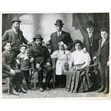
![Ladies' Auxiliary, Beth Jacob Synagogue, Toronto, [ca. 1907]. Ontario Jewish Archives, Blankenstein Family Heritage Centre, item 1311|](/media/Digital Assets/1311.jpg?width=111&height=111&404=no-img.jpg)
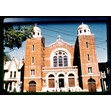
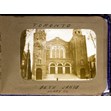



![First Narayever Synagogue, interior, Toronto, [ca. 1977]. Ontario Jewish Archives, Blankenstein Family Heritage Centre, item 2075.|](/media/Digital Assets/2075.jpg?width=111&height=111&404=no-img.jpg)

![Procession at Kiever Synagogue, Toronto, [194-]. Ontario Jewish Archives, Blankenstein Family Heritage Centre, item 535.|The man on the second from the right is Isaac Belfer who was the Gabbai at the Kiever for many years.](/media/Digital Assets/535.jpg?width=111&height=111&404=no-img.jpg)


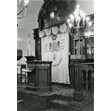
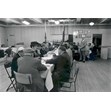
![Rabbi Solomon Langner in Kiever Synagogue, Toronto, [195-?]. Ontario Jewish Archives, Blankenstein Family Heritage Centre, item #533|When the Kiever was completed 1927, Rabbi Solomon Langner became the spiritual leader of the congregation and continued in this capacity until his death in 1973. Rabbi Langner was the son of Rabbi Moishe Langner, the Strettiner Rebbe of Toronto. His three brothers were Abraham, Isaac, and Mordechai, who all became rabbis as well.](/media/Digital Assets/533.jpg?width=111&height=111&404=no-img.jpg)
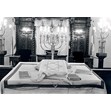
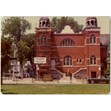
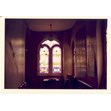
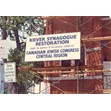
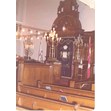
![Sol Edell (left), Chairman of TJC-CJC Archives Committee discusses restoration plans for the Kiever Synagogue with architect Martin Mendelow (right), [1975?]. Ontario Jewish Archives, Blankenstein Family Heritage Centre, item 1794.|](/media/Digital Assets/1794.jpg?width=111&height=111&404=no-img.jpg)
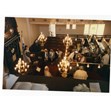
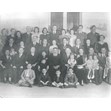
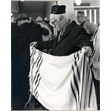
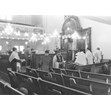
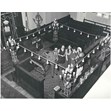
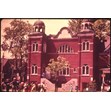

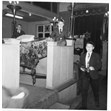
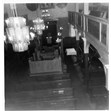
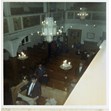
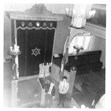
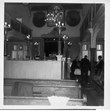
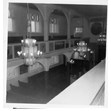
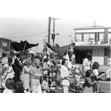
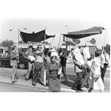
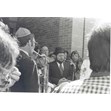
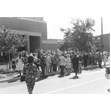

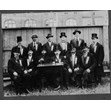
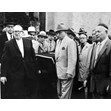
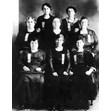
![Family party, anniversary of Faivel and Rochel Zarnitsky, Londoner Shul, Toronto, [1942 or 1943]. Ontario Jewish Archives, Blankenstein Family Heritage Centre, fonds 83, file 9, item 22.|](/media/Digital Assets/3831.jpg?width=111&height=111&404=no-img.jpg)
![Cantor Jacob Dorskind with his choir, Hebrew Men of England Synagogue, Toronto, [ca. 1923]. Ontario Jewish Archives, Blankenstein Family Heritage Centre, item 1904.|](/media/Digital Assets/1904.jpg?width=111&height=111&404=no-img.jpg)
![Cantor Boris Charloff, Toronto, [195-]. Ontario Jewish Archives, Blankenstein Family Heritage Centre, item 3345.|Cantor Boris Charloff had a shul on College St. He was also cantor at Hebrew Men of England Synagogue.](/media/Digital Assets/3345.jpg?width=111&height=111&404=no-img.jpg)
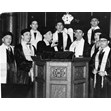
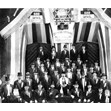
![Car decorated for donation of Sefer Torah to the Hebrew Men of England Congregation, Toronto, [ca. 1918]. Ontario Jewish Archives, Blankenstein Family Heritage Centre, item 993.|](/media/Digital Assets/993.jpg?width=111&height=111&404=no-img.jpg)
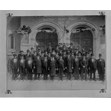

![University Avenue Synagogue, exterior, Toronto, [ca. 1955]. Ontario Jewish Archives, Blankenstein Family Heritage Centre, item 1769.|](/media/Digital Assets/1769.jpg?width=111&height=111&404=no-img.jpg)
![McCaul St. Synagogue, exterior, Toronto, [ca. 1955]. Ontario Jewish Archives, Blankenstein Family Heritage Centre, item 1771.|This building was originally a Methodist church which was renovated and remodeled into a synagogue in 1904.](/media/Digital Assets/1771.jpg?width=111&height=111&404=no-img.jpg)
![McCaul St. Synagogue, interior (view of the ark), Toronto, [ca. 1955]. Ontario Jewish Archives, Blankenstein Family Heritage Centre, item 3183.|](/media/Digital Assets/3183.jpg?width=111&height=111&404=no-img.jpg)
![McCaul St. Synagogue, interior (view of the ark), Toronto, [ca. 1955]. Ontario Jewish Archives, Blankenstein Family Heritage Centre, item 1772.|](/media/Digital Assets/1772.jpg?width=111&height=111&404=no-img.jpg)

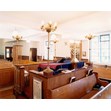

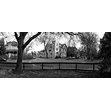
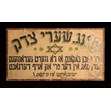
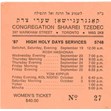

![Primrose Club exterior, [194-]. Ontario Jewish Archives, Blankenstein Family Heritage Centre, fonds 52, series 7, item 1.|](/media/Digital Assets/52-Dora Till/52-7-1.jpg?width=111&height=111&404=no-img.jpg)
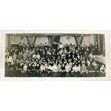

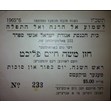
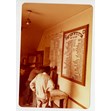
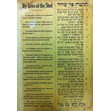
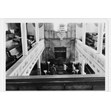
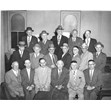
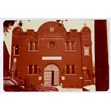
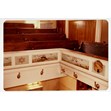
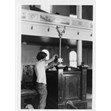
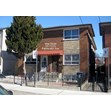
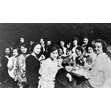

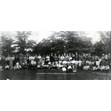
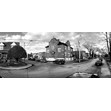
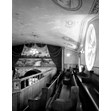

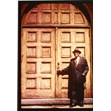


![Shiffer-Hillman suit brush, [194-]. Ontario Jewish Archives, Blankenstein Family Heritage Centre, fonds 22, item 151.|The Balfour Building was designed and built for the Shiffer-Hillman company, who later leased out space to other garment businesses.](/media/Digital Assets/Artifacts/9055.jpg?width=111&height=111&404=no-img.jpg)

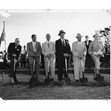
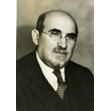



![Perspective drawing of the Hermant Building at 21 Dundas Square, [between 1929 and 1930]. Ontario Jewish Archives, Blankenstein Family Heritage Centre, fonds 49, series 3, file 97.|](/media/Digital Assets/49-Brown/49-3-97/F49-s3-f97_i3.jpg?width=111&height=111&404=no-img.jpg)
![Ground floor plan of lavatories of the Hermant Building at 21 Dundas Square, [between 1929 and 1930]. Ontario Jewish Archives, Blankenstein Family Heritage Centre, fonds 49, series 3, file 97.|](/media/Digital Assets/49-Brown/49-3-97/F49-s3-f97_i10.jpg?width=111&height=111&404=no-img.jpg)
![South elevation drawing of the Hermant Building at 21 Dundas Square, [between 1929 and 1930]. Ontario Jewish Archives, Blankenstein Family Heritage Centre, fonds 49, series 3, file 97.|](/media/Digital Assets/49-Brown/49-3-97/F49-s3-f97_i5.jpg?width=111&height=111&404=no-img.jpg)




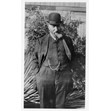

![South elevation to Dundas Street. Store building for Dr. Max Kates at Dundas and Elizabeth Streets, [between 1921 and 1924]. Ontario Jewish Archives, Blankenstein Family Heritage Centre, fonds 49, series 3 file 88.|](/media/Digital Assets/49-Brown/F49_s3_f88_i001b.jpg?width=111&height=111&404=no-img.jpg)

